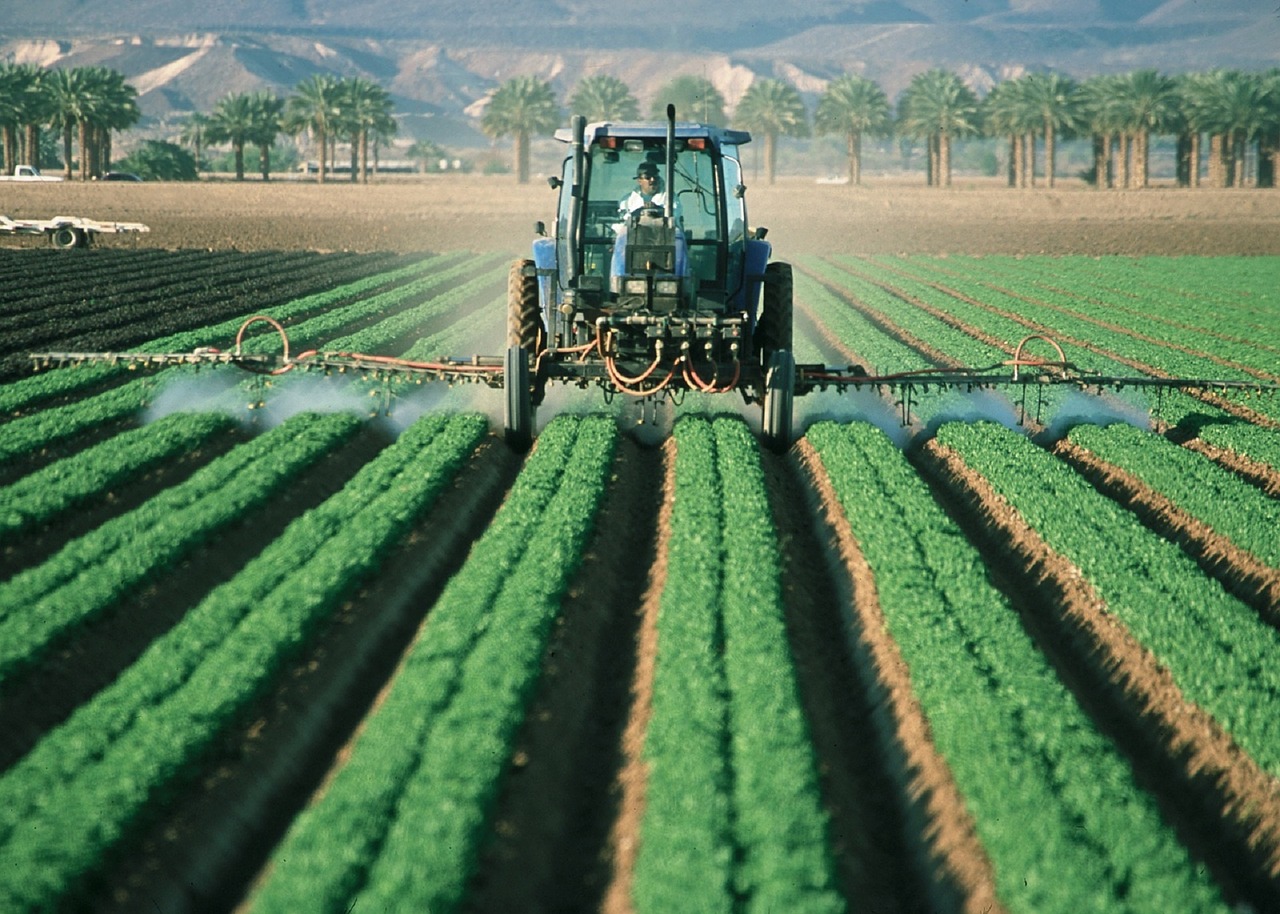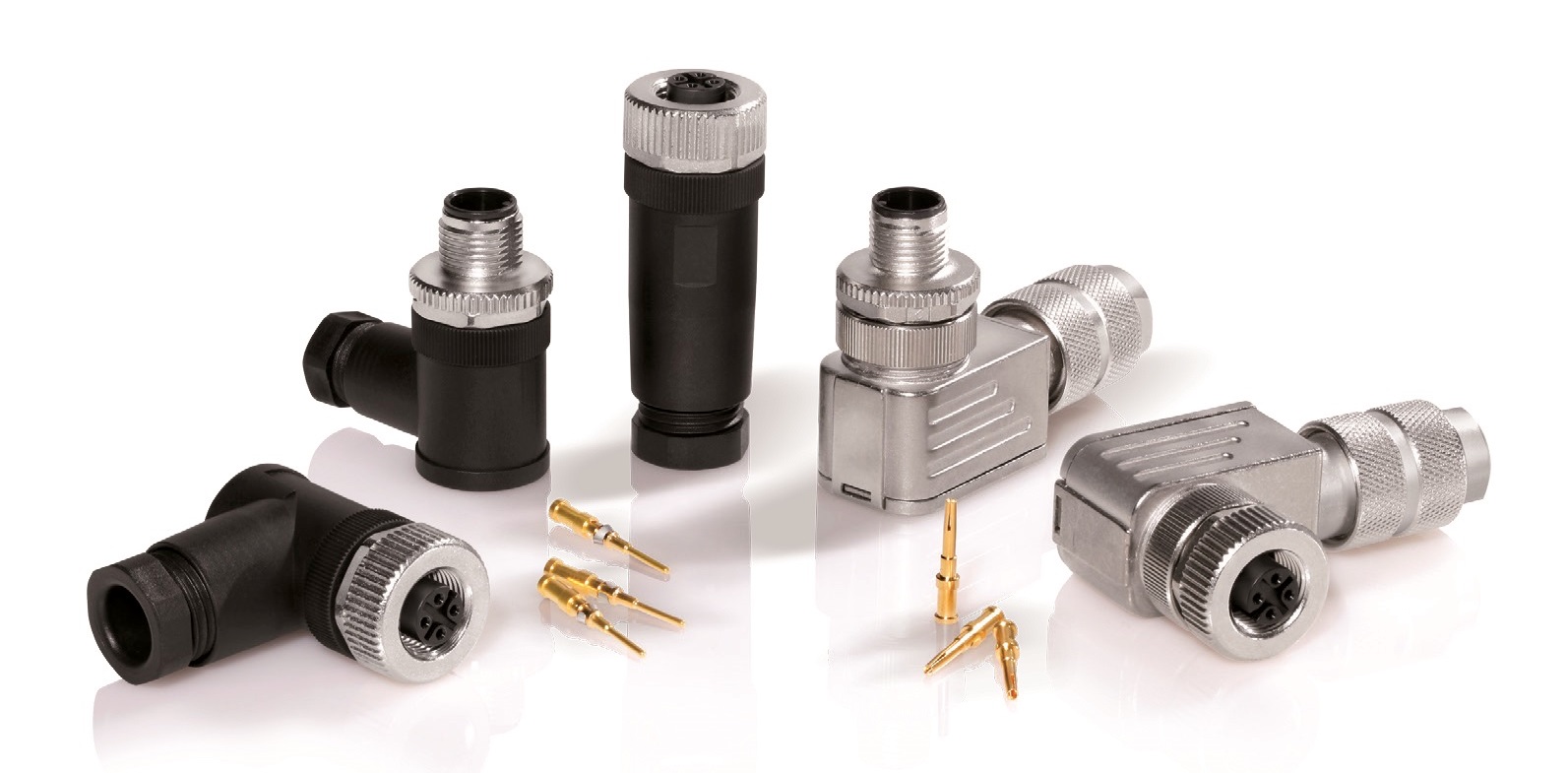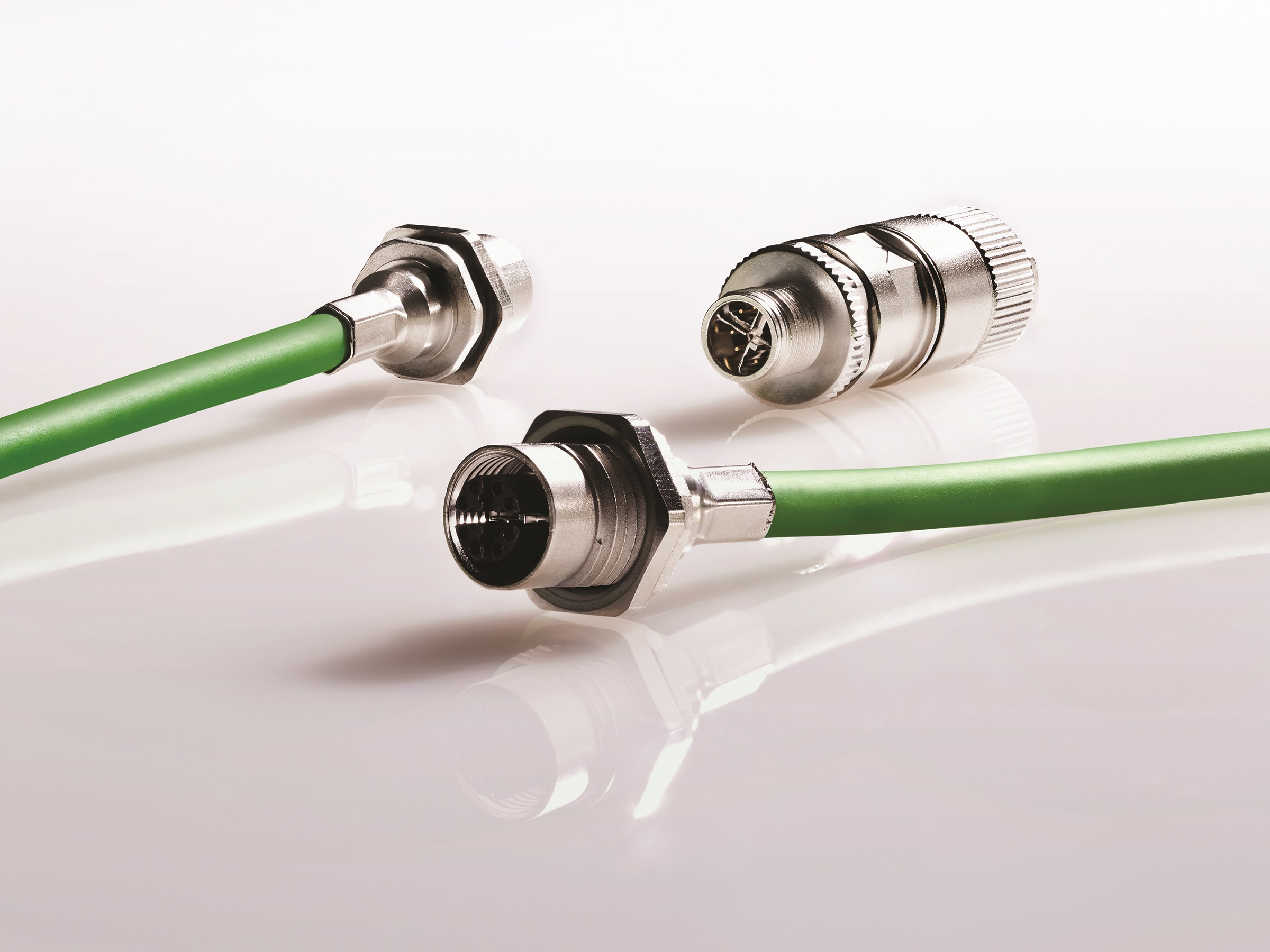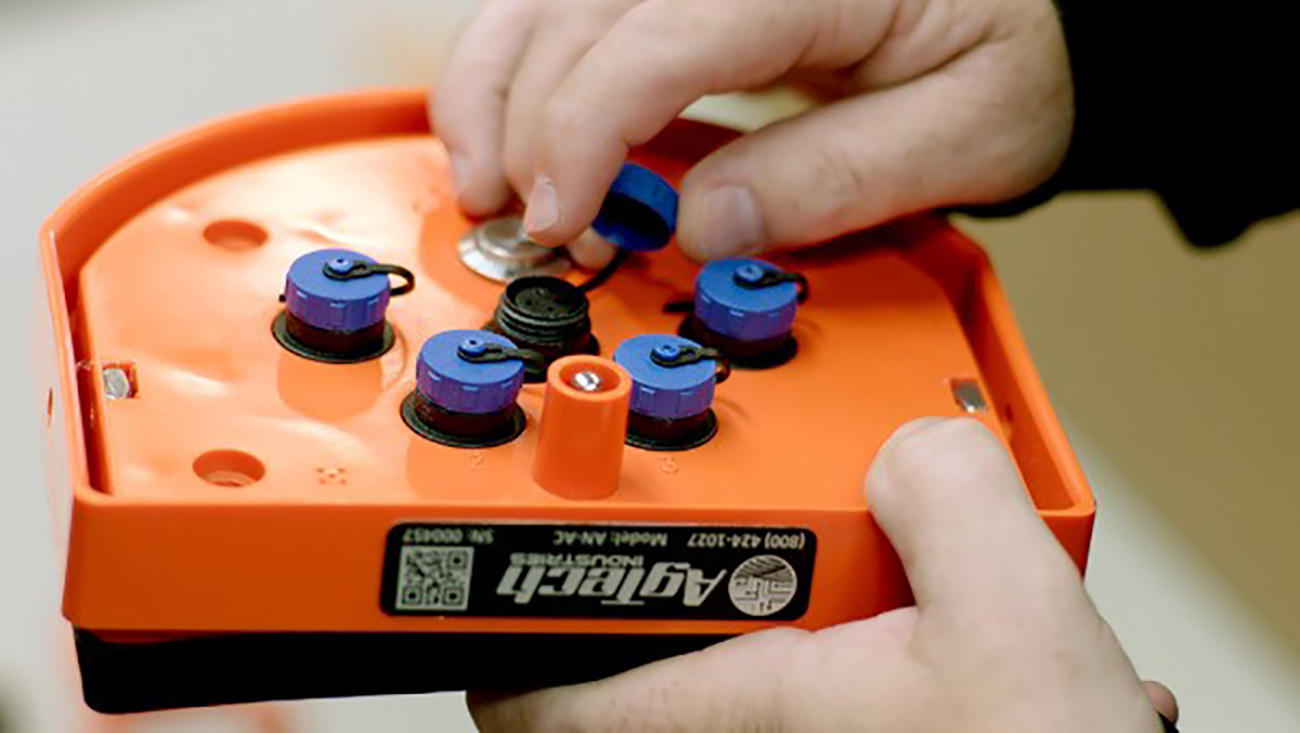Agricultural Smart Connectors Bring in High Yields
Today, a tractor is more than an engine-driven farm machine; it can be the hub of a farm’s IoT network and a farmer’s workspace with the help of rugged, smart connectors.

Today’s sophisticated farm machinery is controlled electronically with the help of a new generation of smart connectors. With this equipment, farmers can enjoy a level of precision in crop production that previous methods could never achieve. “Farming used to be having a tractor, tilling the land, and planting the seeds by machine,” said Joe Amato, director of sales and business development at Binder USA. “The farmer would over-seed or under-seed. Today, seed planting machines are controlled electronically to avoid seeds being stacked on top of each other or unevenly spaced.”
The latest tractor models are equipped with computers, monitors, infotainment features, and air-conditioning. The typical tractor cabin’s electronic setup relies on M12-A and M12-B Ethernet connectors (Figure 2) to transmit external data and information to the controllers and monitors inside the cabin.
“In the future, there will not even need to be an individual in the cab,” says Amato. He believes tractors and other farm equipment will be controlled autonomously. These machines will traverse the farmland, plant seed in a pre-ordained formation and then return to the barn. Irrigation, monitoring, chemical applications, and harvesting will similarly be a largely autonomous, remotely controlled operation. “The farmer can control it from the farmhouse, or wherever he wants to be.”
Autonomous Farm Vehicles
We are already very close to autonomous farming. Amato believes that within five years, there will be no human in the vehicle. “The farmer will know every inch of the land and will plot how he wants the tractor to maneuver through it and then pre-plan with the robot to do that autonomously,” he says. He believes farming will be the first industry to become autonomous, ahead of road vehicles, as remote agricultural environments offer less opportunity for human interaction and accidents to occur.
Even so, the synergy between automotive and farm vehicles is strong. Smart connector technology utilized by manufacturers of agricultural equipment centers around ISOBUS, or the ISO11783 data bus standard for communication protocols that enable communications between tractors and other equipment used in throughout the agriculture growth, harvest, and supply chain. Irrigation, chemical application equipment, monitoring drones, moisture and temperature sensors, harvesting equipment, GPS units, decision-makers, and even post-harvest co-packing and supply chain entities can be linked using ISOBUS. This standard applies to connectors, cables, and data links and is centrally controlled by a working set master module display, which is linked by cable and Ethernet using Deutsch 4-pin connectors. This is the platform that Amphenol, TE Connectivity, Conec, HUBER+SUHNER, Phoenix Contact, and numerous companies are building connectors around for agricultural applications.
Binder has adapted a popular automotive connector for the agricultural market and will soon offer an M12 cord set for a Deutsch-style connector, says Amato. This will have a Deutsch-style connector on one end and an M12 at the other to allow the control panels and monitoring systems to plug into a Deutsch connector in a tractor. “There seems to be a change away from Deutsch towards the M12,” said Amato. “This is offering choices for both so [users] can transition.”

Figure 1: Binder’s M12-A for automation and M12-B connectors for sensor and automation functions
M12 is an industry standard for sensor and automation applications. It is a compact design and used for control operations. The typical tractor cabin will rely on M12-A and M12-B connectors (Figure 1) and the Ethernet for content, which is transmitted to the controllers and monitors inside the cabin. Binder supplies M12 connectors, including the M12-X connector (Figure 2) for autonomous farm vehicles to enable communication between the steering wheel, steering column, and monitor.
Binder’s M12-X is the interconnect for video-only. It has eight internal contacts, four twisted pairs, and is for use with Power over Ethernet (PoE). With transmission rates of up to 10Gb/s, the M12-X connectors can be used in network applications in harsh environments. They conform to IEC 61076-2-109, which specifies circular connectors with data transmissions with frequencies up to 500MHz.

Figure 2: Binder’s M12-X operates at up to 10Gb/s for video-only transmissions.
Smart Farming
Just as the home and the factory are becoming automated, the agricultural sector has turned to smart farming. Careful monitoring and precision applications of various agricultural chemicals can reduce costs, minimize environmental impacts, and improve crop yields.
Christian Taylor, engineering team leader at Bulgin, believes farming can be improved by the IoT. “Technology is pervading all sectors with the advent of IoT and Industry 4.0, and clearly agriculture will be no exception,” he says. “From crops and soil pH analysis via remote field sensor equipment, to heavy electrically powered motorized harvesting equipment, we predict that, with respect to connector level design, we may see an increase in demand for smart connector technologies.”
To monitor the growth of crops in fields, farmers are using drones to assess and react quickly to conditions across a wide area. For drones, M9 connectors are specified, says Amato, as these small, metal connectors are lightweight and can be shielded to avoid interference in flight.
Integrating Sensors
The IoT depends on sensors to relay data. In agriculture, sensors in the field can monitor the water level in soil. Bulgin’s PXS4XX Smart Connector is a rugged smart connector that was originally developed for an agricultural in-field monitoring system for AgTech Industries, a company that develops data gathering and monitoring products and systems. It wanted a custom solution that could withstand extremes of temperature and environments and could be left unattended for long periods of time, but was simple enough for someone who was not a hardware engineer to set up.
The AgriCapture telemetry system (Figure 4) has a connector developed by Bulgin with a built-in IC that allows the connector to be electronically paired with the correct sensor, for monitoring and data gathering.

Figure 3: Bulgin developed an agricultural telemetry system using its Smart Connector series.
The 400 series miniature, sealed connector was designed to integrate a PCB with an electrically erasable programmable read-only memory (EEPROM) located underneath the overmold. The connectors are reprogrammable and can be updated as required without compromising the integrity of the shell of the sensing device, said Taylor.
Effective Sealing
Farmland and farmyards can be harsh environments. There is no dirt quite like farm dirt, which calls for connectors that can operate in harsh environments. For these conditions, Binder has developed a harsh-environment connector (HEC) specifically for the agricultural industry that offers power-only, signal-only, or hybrid power and signal functionality. It is a lightweight, plastic, bayonet-style connector that is sealed to IP69K, which means it can be pressure-washed without water or foreign objects being able to enter and harm the contacts or the content.
It is important to have the correct IP rating, as these connectors are usually exposed to the elements and it is vital that equipment, like the control panel of a tractor, can be opened up and cleaned safely and without causing harm.
The water monitor connectors are IP67-rated, which means they can be temporarily submerged in water. IP68 connectors can be submerged in 10m of water over 24 hours, and IP69K-rated connectors can withstand water pressure over 2,000psi, which would cause “most other connectors [to] be torn apart,” said Amato.
“Bulgin uses various grades of elastomers and polymers to ensure the most rugged product available,” said Taylor. “While our connectors typically range from IP66 to IP68 [meaning they can be submerged for up to two weeks at 10m deep], some are also tested and qualified for IP69K for protection against dust, high temperatures, and high-pressure water sprays.”
Cabling is also important. The cable and overmold must be UV-rated and able to operate in extremes of temperature to withstand the depths of winter as well as the heat of high summer around the globe.
Not all agriculture occurs outside. Binder’s 770 self-sealing connector is used indoors in poultry farms. It is sealed when disconnected so that, in this application, equipment in chicken incubators can be plugged in for monitoring and removed for analysis without the operator having to worry about replacing a cap to prevent damage to the contacts.
Automation and connectivity are transforming farming into a high-tech operation, with power, signal, and data technologies working together to keep crop yields high. Smart connectors that feature rugged and strategic designs are key to this revolution.
Like this article? Check out our other Connector Basics, New Technology, and 2019 articles, and our Industrial Market Page.
- Matter: A Show of Unity for Connectivity - September 5, 2023
- Brexit Update: UK Connector Industry - March 28, 2023
- Sensors Make it Plain Sailing for a Smart Ferry - February 21, 2023





